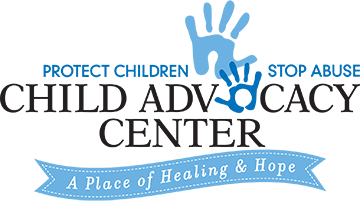
January is National Slavery and Human Trafficking Prevention Month which is the perfect time to talk about the role Children’s Advocacy Centers (CAC’s) can assume for identification, prevention, and awareness surrounding human trafficking. Shared Hope International says “The burden of identifying, referring and treating victims requires multidisciplinary education…and a coordinated community response, one that Child Advocacy Centers nationwide are prepared to provide.” How might CAC’s be prepared to provide a coordinated response you ask? Through their multi-disciplinary team! The multi-disciplinary team is made up of therapy providers, law enforcement, Department of Social Services, Department of Juvenile Justice, the District Attorney’s office, medical providers, school system, and the child advocacy team. The team’s purpose is to staff cases to improve outcomes for child abuse and neglect victims- which includes human trafficking. It is important to acknowledge that a coordinated response and the multi-disciplinary team is not a ‘one size fits all’ for every community. The response for human trafficking requires engaging with community partners, identifying needs, and on-going assessment of the work being done.
In Gaston County, The Lighthouse Children’s Advocacy Center and Hope United Survivor Network has taken an active role in minor anti-trafficking efforts within the community by helping with identification of survivors, prevention, education and awareness. Like previously mentioned, this is not a ‘one size fits all’ and what is working in our community is a humble example of efforts that can be made to fight human trafficking in a community. For a little more insight, The Lighthouse facilitates identification by providing screening through the use of the Commercial Sexual Exploitation- Identification Tool (CSE-IT) published by the West Coast Children’s Clinic. If you work with human trafficking cases in any capacity, most minors that have experienced trafficking do not identify as a victim and this tool helps ensure the appropriate services are being recommended despite a disclosure of trafficking. The evidence based CSE-IT screening tool is completed on every child over the age 10 in Gaston County foster care. Once the screening tool has been completed, CAC staff completes recommendations and sends them to the permanency planning/foster care social worker to either prevent human trafficking or provide support for those who have experienced trafficking. As a way to help prevent human trafficking, a human trafficking prevention session for youth is held monthly at the CAC- where human trafficking and internet safety can be talked about in a safe, judgement free environment. The youth that attend are allowed to ask questions and discuss situations they have experienced without the fear of getting in trouble. The best place to start for anti-trafficking efforts within the CAC is educating the multi-disciplinary team on what human trafficking is and what it can look like as well as increasing awareness within your community. Case review is also a perfect time to discuss cases that are at-risk of human trafficking and/or identified survivors or human trafficking- this is the time for the team to work together to ensure appropriate services are put in place within the community. Another way to increase anti-trafficking efforts within the CAC is having specialized positions such as forensic interviewers and community outreach and awareness worker that focuses on anti-trafficking. CAC’s could assist survivors by having forensic interviewers trained in how to process direct allegations of human trafficking and completing productive interviews. Community outreach and awareness positions that are focused on anti-trafficking work can be helpful by offering advocacy on human trafficking cases within case review as well as being a resource for the community partners to ensure trauma informed services for survivors. Children’s advocacy centers cannot do anti-trafficking work alone, it truly takes a team of individuals from different disciplines to gather around the table to improve outcomes for child abuse and neglect victims!
